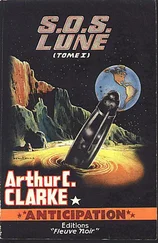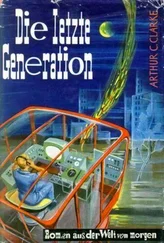Ishmael leaned down close from his perch on the desk, his voice raspy with anger. “You grovel to a man like Crane because an Africk can’t survive in the white man’s inner world without an owner. Are you too lost in the white woman or tied up in your own webs to see that?”
“Damn you,” Newcombe said, standing, pacing.
“But from me,” Ishmael said, “it makes sense, doesn’t it?”
Newcombe took a long breath, tried to repress his anger at Crane … and couldn’t. “Yes,” he said, “it makes sense.”
“Then I’ve convinced you?”
“No, but you’ve made some inroads.”
Ishmael slid over to the office door and locked it. He turned back, grinning. “I’m in no hurry.”
GRABENS THE MISSISSIPPI VALLEY—NEAR NEW MADRID
10 SEPTEMBER 2024, LATE AFTERNOON
Gary Panatopolous was a contractor with the Geological Survey. A digger, he was paid by the job, not the depth of the hole he gouged into the earth. He’d been fighting Lanie, Crane, and Newcombe for three straight days up and down the Mississippi about how deep to make the holes. He did not want to dig so much or so deep. His five-year-old son was with him today, standing like his father with hands on hips, scowling at the Foundation team.
His machine, which he called Arthro, was large and black, crouching on eight legs like a spider over a hole that was five feet in diameter. His drill bit was bigger than several men and powerful enough to throw the sediment a mile back up and out of the hole. The digger was two stories high and a block long and sent geysers of dirt and mud heavenward. As it finished each section of digging, its spider legs placed pipe to secure and stabilize the hole. Long after Crane and the team were gone, Mr. Panatopolous would be filling the hole in again.
Newcombe walked between the legs of the digger to join the others; the drill was moving up and down, sucking at the lifeblood of the Earth.
“You people are crazy!” Panatopolous was saying as Newcombe arrived, confirming his status as an honest man to Dan. “What’d’ya think you’re gonna find that deep, huh? Buried treasure?”
“If we’re lucky,” Crane said, his hood pushed back while they stood in the shade of the digger’s underbelly. “Dan, have you had any contact with Burt?”
“He supervised thirty seismo setups,” Newcombe said above the eerie growl emanating from the depths of the hole. “Everything’s up and running. All we need is Nature’s cooperation.”
“Nature never cooperates,” Crane said. “Tame it or live with it. Those are the only options.”
“Yeah,” Lanie said, while tapping her wristpad. “It’s me. What?”
“I’m gonna lose money on this whole deal,” Panatopolous snapped.
“Got it,” Lanie said. “Keep juicing.” She glanced from man to man. “Get on the N channel and take a look at this.”
Newcombe punched his wrist pad, the inside of his goggles instantly showing a chart of the numbers of known earthquakes in the Mississippi Valley by the months of the year. Fully seventy percent of the earthquakes in this area occurred between the months of November and February.
“We’re on with research,” Lanie said. “Want to ask a question?”
“See what you can find about relationships to lunar phases and solar flares,” Crane said. He turned back to Panatopolous, speaking low. “You do what you can for me, and I’ll do what I can for you. Fair?”
“Fair,” the digger said, nodding firmly just as a horn bleated, signifying completion of the digging of this hole. “We have reached six thousand and … fourteen feet. I’ll get the gondola.”
Newcombe kept the N channel on his aural and listened to the response from research.
“We find no correlation between lunar phases and Mississippi Embayment quakes. However, there does seem to be a close relationship between sunspot activity and Reel-foot displacement. Major quakes have taken place during periods of low sunspot activity. Observe the graph.”
Newcombe didn’t bother putting it on. Instead he watched the hole; the thick cable of the digger rewound quickly, whistling, spooling up inside the digger itself—the spider retracting its web.
“What about this year’s solar activity?” Crane asked.
“Few sunspots,” the researcher said, “the fewest since … 1811.”
Crane was not surprised, but Newcombe’s mouth went dry, and Lanie sucked in her breath.
“There’s the gondola,” Newcombe pointed out.
They cut transmission and hurried to the digger which was wheezing bright white smoke from its open belly fifteen feet above.
Newcombe put on a backpack containing a water drill and climbed into the elevator-size car, followed by Crane and Lanie. Crane cradled the spike like a baby.
They journeyed quickly down the tube, freefalling, interior lights coming on. They pulled off their goggles and headgear. A mile passed, brake skids slowing their descent the last several hundred feet. Finally, the gondola clanged against the rock of the graben.
Lanie knelt to pull off the floor round, so like a manhole cover, Newcombe thought, smiling wryly. They stared down at five- hundred-million-year-old rock.
They sat on the edge of the opening, planting their feet on the rock. It was smooth and flat, polished by the digger. Newcombe got out the drill and attached the gauging armature to the front. “Turn me on,” he told Lanie, who flipped the switch on the backpack that juiced the compressor.
Pressurized water shot from the nozzle in a pencil-thin line, drilling easily into the rock, the nozzle then moving down the armature until it hit bottom after about ten inches.
He released the pressure and pulled away the drill. Crane unwrapped the ten-inch spike and its toy hammer. The spike had a hairlike appendage on the end, the brains of the machine. He looked at Lanie. “Would you like to do the honors?”
She smiled and took the apparatus, leaned forward and slid the spike into the drill hole until barely a half inch protruded. She used the hammer then, tapping the spike gently. An activation hum sounded immediately.
“I’m already tied to the van’s system,” Newcombe said, pulling the tiny interface out of his wristpad to hook to the top of the spike. He married the units, then hit enter, the wristpad bleeping as it measured the amount of compression stress being exerted on the rock of the graben.
He ran some of it through his goggles as it fed to the van. “What’s the slippage on this a year?”
“Couple inches,” Crane said, “accumulated over two hundred years.”
Numbers in red and blue flashed past Newcombe’s eyes. “That’s over thirty-three feet in slip built up. A lot of pressure. I’m looking at stress numbers here that exceed anything I’ve ever seen. We’re getting damned close to the rupture threshold.”
The numbers stopped. “There’s going to be an earthquake here,” Newcombe whispered, “and soon.”
“I know,” Crane said, holding his left arm and grimacing.
At that moment a wall of noise rumbled through the rock, their cavern shaking for several seconds, dirt cascading down and coating them.
“Real soon,” Newcombe said. Lanie clutched his shoulder.
Crane calmly tapped his wrist pad. “Take us up, Mr. Panatopolous,” he said. “We’re finished.”
Sumi listened to the down link bleep on her console and knew she was hearing a grace note in the long sonata that had begun several months before in VEMA’s observation deck at the bottom of the Pacific. Her swan song.
Outside it was raining. Most of the crew at the Foundation had taken the day off since both Crane and Burt Hill were in Missouri. Everyone from techs to department heads were outside, their voices drifting happily up to Sumi’s perch.
Читать дальше











